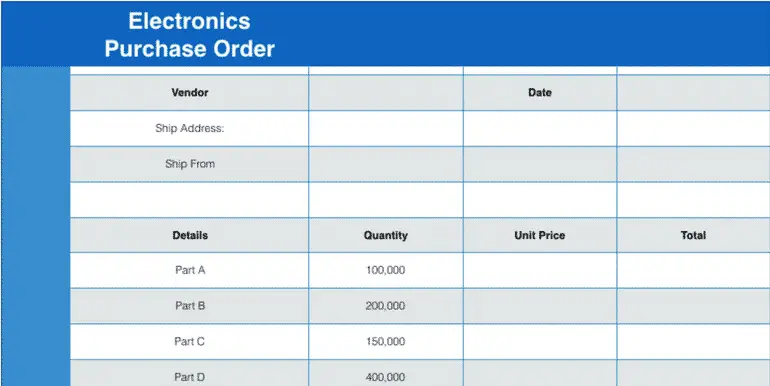What is a Purchase Order?
A purchase order is a document representing the initial offer from a buyer to a seller. It must include type, quantity, and price for products and services, and when the seller accepts a purchase order, it creates a legally binding contract between the two parties.

Most companies, even small to medium enterprises (SMEs) use some form of purchase order to obtain supplies, products or services from vendors. Purchase orders are important because they eliminate confusion between the buyer and seller, and the document is commonly used as an audit trail or legal recourse in case of any issues between the two parties.
Not only are purchase orders imperative for risk protection, but they are necessary for inventory management and payment tracking. Suppliers can compare ordered inventory to inventory shipped and on-hand. Purchase orders can also be used to help keep track of invoices, payments, and outstanding amounts.
Although enterprises of all sizes and industries use some variation of a PO system, purchase order processing is not perfect. Issues can arise with incorrect authorizations, with missing or inaccurate approval signatures. Details regarding the chosen supplier or the selected goods and services may be incomplete. Information required by the accounting department including GL codes and cost center may be incorrect or missing altogether.
Each of these errors requires time-consuming investigation and reconciliation to correct, diverting valuable time and resources. Purchase orders are essential for risk management, inventory, and accounting, yet manual processing is inefficient and prone to error.
Automating the PO process provides many advantages:
- Documents are centralized – Documents are created electronically and accessible from multiple locations, by a variety of authorized users.
- Documents are standardized – With a standardized format, POs are easy to create; and supplier information can be included so that details are never incorrect or forgotten.
- Automated forwarding – Automatically forward electronic documents to the correct person for authorization. The process is streamlined, fast and transparent.
- Spend visibility – Tracking spend becomes easy, with a central source for data and built-in reporting.
With an automated PO solution, like Orbweaver Advance, your company can streamline the PO process, speeding up document generation, approvals, and processing for maximum efficiency. Exception management is automatic, and discrepancies between PO and invoice can be resolved quickly. Stakeholders can easily establish controls over inventory, purchases, and payments.
With increased efficiency, and reduced errors, transaction speeds will increase and time that would have been spent on manual processes can be diverted to higher-level activities. Relationships with suppliers, vendors and partners can be improved, with clear communications and faster transaction times.
Get in touch with Orbweaver today for a free consultation or to learn more about Orbweaver Advance, and how automation can help to improve your company’s purchase ordering processes.
